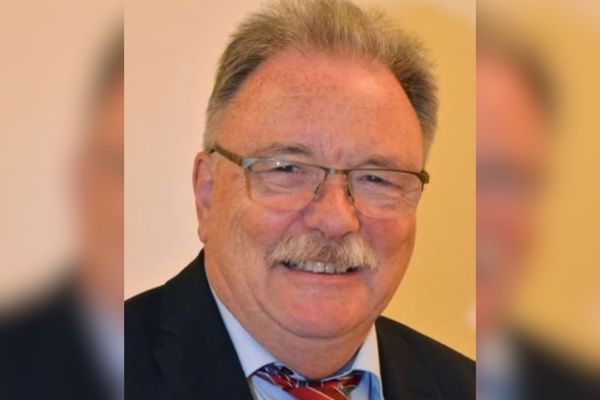
Nvidia Corp. told investors it’s focused on maintaining growth with new products, including speedier data-center chips, rather than embarking on more aggressive stock-buyback plans as some shareholders had hoped.
At the company’s investor meeting Tuesday, Chief Financial Officer Colette Kress said that the company’s priority is using cash to expand its business. Nvidia has bought back $2 billion in stock during the current quarter, she noted, but the company hasn’t increased its budget for repurchases. Nvidia has $5 billion of buyback authorization left, Kress said.
Some investors had been eyeing additional buybacks after Nvidia walked away from a $40 billion plan to acquire Arm Ltd. in February, according to Citigroup Inc. and Bank of America Corp. That deal, which failed to overcome regulatory opposition, would have been the biggest takeover in chip-industry history.
Nvidia shares slipped as much as 2.5% following Kress’s remarks, but soon recovered. Though Nvidia is down nearly 10% this year, that’s in line with a broader slide for chip stocks.
Nvidia’s focus now is new products and technology aimed at continuing its rapid growth in artificial intelligence processing. Graphics chips based on the new “Hopper” design will debut later this year, the company said. The processors are created with as many as 80 billion transistors and -- when paired with new connecting chips -- will massively speed up the development of software that understands human speech and does genomic research.
Under Chief Executive Officer Jensen Huang, Nvidia has parlayed its dominance of graphics chips prized by computer gamers into a lucrative position in server technology. The company supplies chips to the owners of some of the world’s largest data centers, which use the technology to power the artificial intelligence software needed to make sense of the growing flood of digital information.
Huang saw the opportunity early and tasked Nvidia’s engineers with adapting its product to become crucial to this growing type of computing. The company branched out with new types of semiconductors, computer systems, software and services to keep it ahead of the competition.
Nvidia’s Hopper technology, named for computer science pioneer Grace Hopper, is its latest offering. It contains circuitry specifically designed to run so-called Transformer machine learning models, which are used to improve the way that machines understand and interpret human speech. Hopper will also better link with other chips, allowing it to remove some of the bottlenecks caused by transferring huge data sets between parts of a computer. Nvidia will rely on contract manufacturer Taiwan Semiconductor Manufacturing Co. to make the chips.
Alibaba Cloud, Amazon.com Inc.’s AWS, Alphabet Inc.’s Google Cloud and Microsoft Corp.’s Azure are among the large companies that will adopt the new chips, Nvidia said. In addition, computer makers such as Dell Technologies Inc. and Hewlett Packard Enterprise Co. will offer machines based on the silicon.
Nvidia also announced the availability of the Grace CPU Superchip, its brand name for a new central processing unit for high-end data-center computing. That product is its initial foray into the bigger market for CPUs -- a field where Intel Corp. technology remains dominant but is facing greater pressure from new entrants.
It’s been six weeks since Nvidia walked away from its plan to acquire Arm, an influential U.K. chip designer, from SoftBank Group Corp. SoftBank is now pursuing an initial public offering for the business instead.
©2022 Bloomberg L.P.







